Reading Time: 2 minutes When it comes to stacking bales, a little forethought can go a long way to ensuring a better product. “Storage losses from improperly stacked bales can be anywhere from 15 to 20 per cent of the dry matter yield while protein and energy losses can be anywhere from five to 10 per cent,” said beef […] Read more
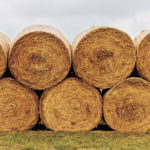
Don’t stack the deck against yourself
The pyramid style is the worst and the mushroom method isn’t much better
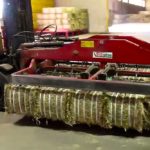
Technology could open up hay export markets for Ontario
An Ontario hay co-operative hopes to have a double-compaction facility running by 2018, giving it access to global markets for hay. Ontario hay has traditionally been at a shipping cost disadvantage compared to most competitors, as hay headed for Asia or the Middle East has had to be shipped by rail to the West Coast. […] Read more
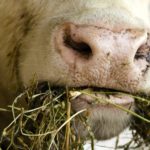
Tips for dealing with greenfeed that saw snow before harvest
Heating can greatly lower the feed value, moulds will reduce digestibility, and the potential for nitrites is higher
Reading Time: 2 minutes Greenfeed that saw snow before being harvested this year presents some extra challenges when feeding. Bales containing 18 to 20 per cent moisture (or higher) have the potential to heat, and some of the sugars will be used by the microbes during the heating process, said provincial forage specialist Barry Yaremcio. “This will reduce the […] Read more

Ample hay supplies increase the benefits of storing bales properly
Protecting hay that won’t be fed until the winter of 2017-18 could save you $70 a head in winter feeding costs
Reading Time: 3 minutes Protecting hay from weather damage can significantly reduce the cost of wintering cows. Adequate moisture conditions in most of the province have resulted in larger-than-normal yields resulting in bigger stacks and rows of hay bales. If the winter is normal and cow numbers remain static, there could be a large surplus of hay carried over […] Read more
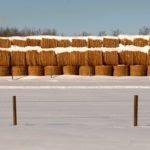
Don’t spoil your hay — store it properly
Forage expert offers tips for reducing spoilage, and makes a pitch for having a hay shed
Reading Time: 2 minutes While hay quality varies across the province, how to store that hay for the best results doesn’t. “We’ve got a mixed bag this year,” said provincial beef and forage specialist Barry Yaremcio. “Some people cut their hay early, got caught with the rains and had it discolour before it even got into the bales. Others […] Read more

If the rain won’t go away, you still have options when haying
Making haylage is a good option, but there are several things to keep in mind, says crop specialist
Reading Time: 3 minutes What do you do when the weather conspires against you and hay refuses to dry? “You start looking for alternatives,” said provincial crop specialist Harry Brook. “A number of alternatives is available to consider when hay will not dry down to the 16 per cent moisture level that’s considered suitable for long-term storage.” One form […] Read more

For safety’s sake, read this list and check it twice
Haying often means rushing to beat the weather, and that ups the danger, says farm safety expert
Reading Time: 2 minutes Baling season is once again in full swing. Many producers equate baling with hot summer days and a rush to beat the weather. While getting hay baled and off the field is a top priority, doing the job safely should take precedence. “To increase the safety of baling procedures while ensuring the job gets done, […] Read more
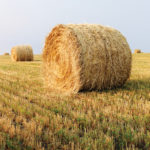
How to establish a fair price for standing hay
Buyers should pay by the ton, not the acre, and there should be 10 to 30 per cent allowance for weather risk
Reading Time: 2 minutes Determining a fair price for standing hay isn’t an exact science, says a provincial farm business management specialist. “Hay prices are difficult to establish as they are affected by a combination of factors such as spring inventory carry-over, pasture conditions, feed competitors, cutting date, quality, yield, and location,” said Dean Dyck. “As we saw in […] Read more
It was a big year for greenfeed in 2015
Reading Time: < 1 minute Producers in Alberta harvest significant acres of annual crops for greenfeed and silage every year, but production statistics are not available from Statistics Canada, nor any other source. “To fill this gap, we initiated a greenfeed and silage production survey in 2002,” said provincial crop statistician Ashan Shooshtarian. The latest survey (available at agriculture.alberta.ca) shows […] Read more
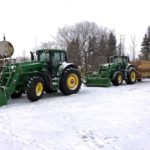
Sask. rancher charged as missing equipment found
A western Saskatchewan cattle rancher faces charges of theft and possession of stolen goods after the discovery of missing tractors, balers, trucks and other equipment Thursday. Iain Stables, 38, is due in Provincial Court in Saskatoon on April 14 to answer to 29 criminal charges, Saskatoon RCMP said in a release Friday. Saskatoon and Warman […] Read more

